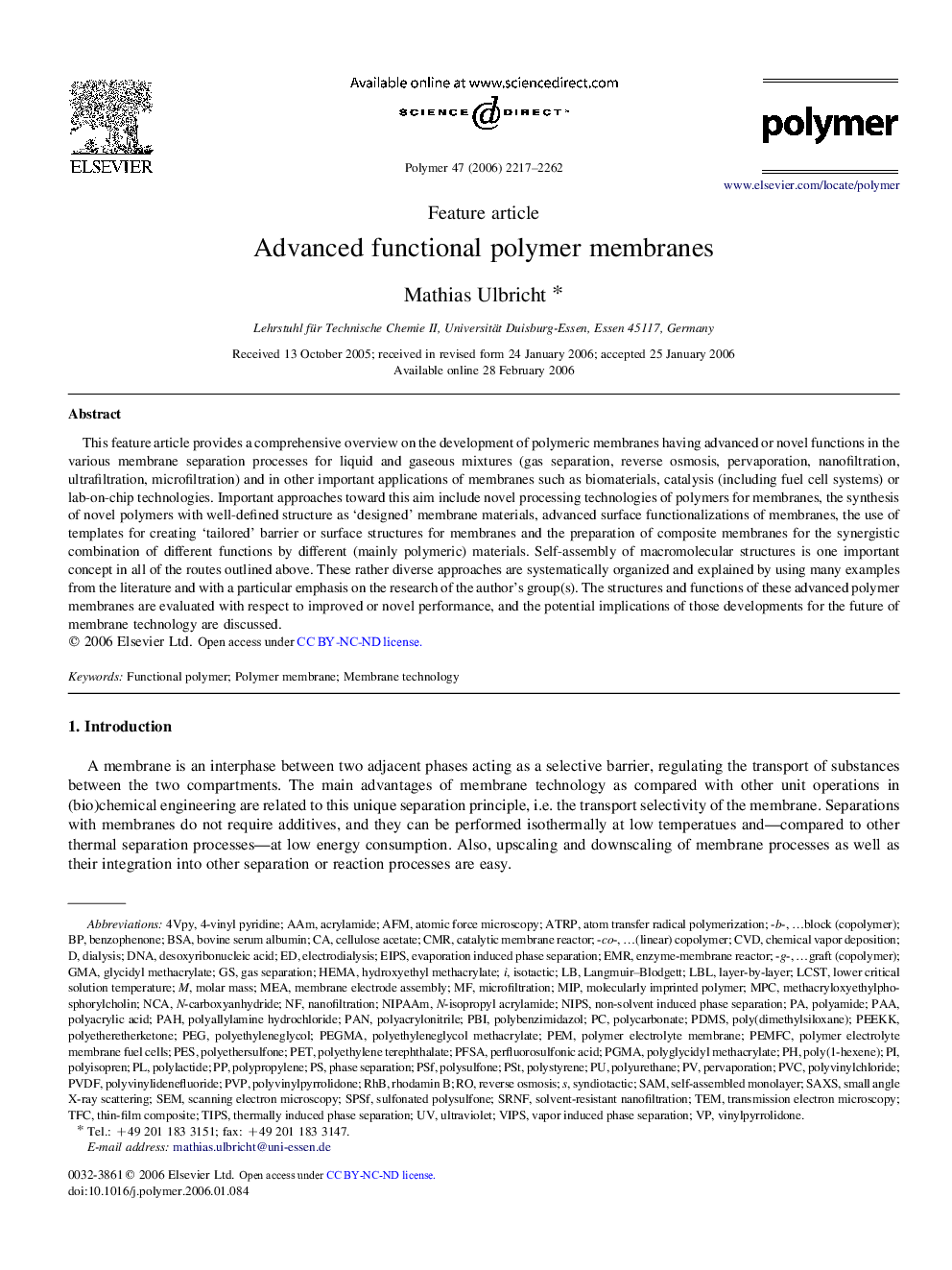| Article ID | Journal | Published Year | Pages | File Type |
|---|---|---|---|---|
| 5190971 | Polymer | 2006 | 46 Pages |
Abstract
This feature article provides a comprehensive overview on the development of polymeric membranes having advanced or novel functions in the various membrane separation processes for liquid and gaseous mixtures (gas separation, reverse osmosis, pervaporation, nanofiltration, ultrafiltration, microfiltration) and in other important applications of membranes such as biomaterials, catalysis (including fuel cell systems) or lab-on-chip technologies. Important approaches toward this aim include novel processing technologies of polymers for membranes, the synthesis of novel polymers with well-defined structure as 'designed' membrane materials, advanced surface functionalizations of membranes, the use of templates for creating 'tailored' barrier or surface structures for membranes and the preparation of composite membranes for the synergistic combination of different functions by different (mainly polymeric) materials. Self-assembly of macromolecular structures is one important concept in all of the routes outlined above. These rather diverse approaches are systematically organized and explained by using many examples from the literature and with a particular emphasis on the research of the author's group(s). The structures and functions of these advanced polymer membranes are evaluated with respect to improved or novel performance, and the potential implications of those developments for the future of membrane technology are discussed.
Keywords
AFMPolylactideMEAPDMSPEMFCPAHPVPMPCMIPPVDFPEMATRPCMRPESPAANIPSSAMLbLEMRTFCPSTPBIGMAAAMNCAPolyetheretherketoneEIPSrHbLcstRhodamin BPEGMAPGMAPFSAVapor induced phase separationPolyallylamine hydrochlorideSAXS4-Vinyl pyridineBSADNALangmuir–BlodgettN-Isopropyl acrylamidepsfSRNFVIPsbovine serum albuminAcrylamideCellulose acetateReverse Osmosisdesoxyribonucleic acidPerfluorosulfonic acidUltravioletelectrodialysisAtom transfer radical polymerizationIsotacticTemBenzophenonePervaporationMolar massSelf-assembled monolayerMembrane technologyPhase separationThermally induced phase separationNon-solvent induced phase separationGas separationLower critical solution temperatureDialysisCatalytic membrane reactorChemical vapor depositionCVDPolymer electrolyte membrane fuel cellsSyndiotacticNIPAAmPolymer electrolyte membranePolymer membraneLayer-by-layerPANSEMmembrane electrode assemblyScanning electron microscopyTransmission electron microscopyatomic force microscopyMicrofiltrationNanofiltrationSolvent-resistant nanofiltrationTIPSN-carboxyanhydrideHEMAHydroxyethyl methacrylatevinylpyrrolidonePETsmall angle X-ray ScatteringPolyacrylonitrilepoly(dimethylsiloxane)PolyamidepolyethersulfonePolyethylene terephthalatepolyethyleneglycolPolysulfoneSulfonated polysulfonepolyvinylpyrrolidonePolyvinylidenefluoridePolypropylenePolycarbonatePolyglycidyl methacrylateMolecularly imprinted polymerFunctional polymerPolyacrylic AcidPEGPolystyrenePVCPolyurethaneThin-film compositepolyvinylchlorideGlycidyl methacrylate
Related Topics
Physical Sciences and Engineering
Chemistry
Organic Chemistry
Authors
Mathias Ulbricht,
